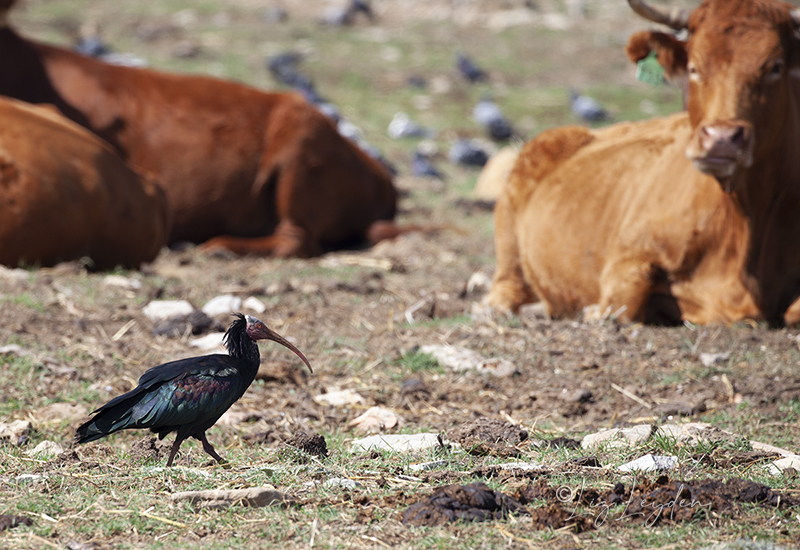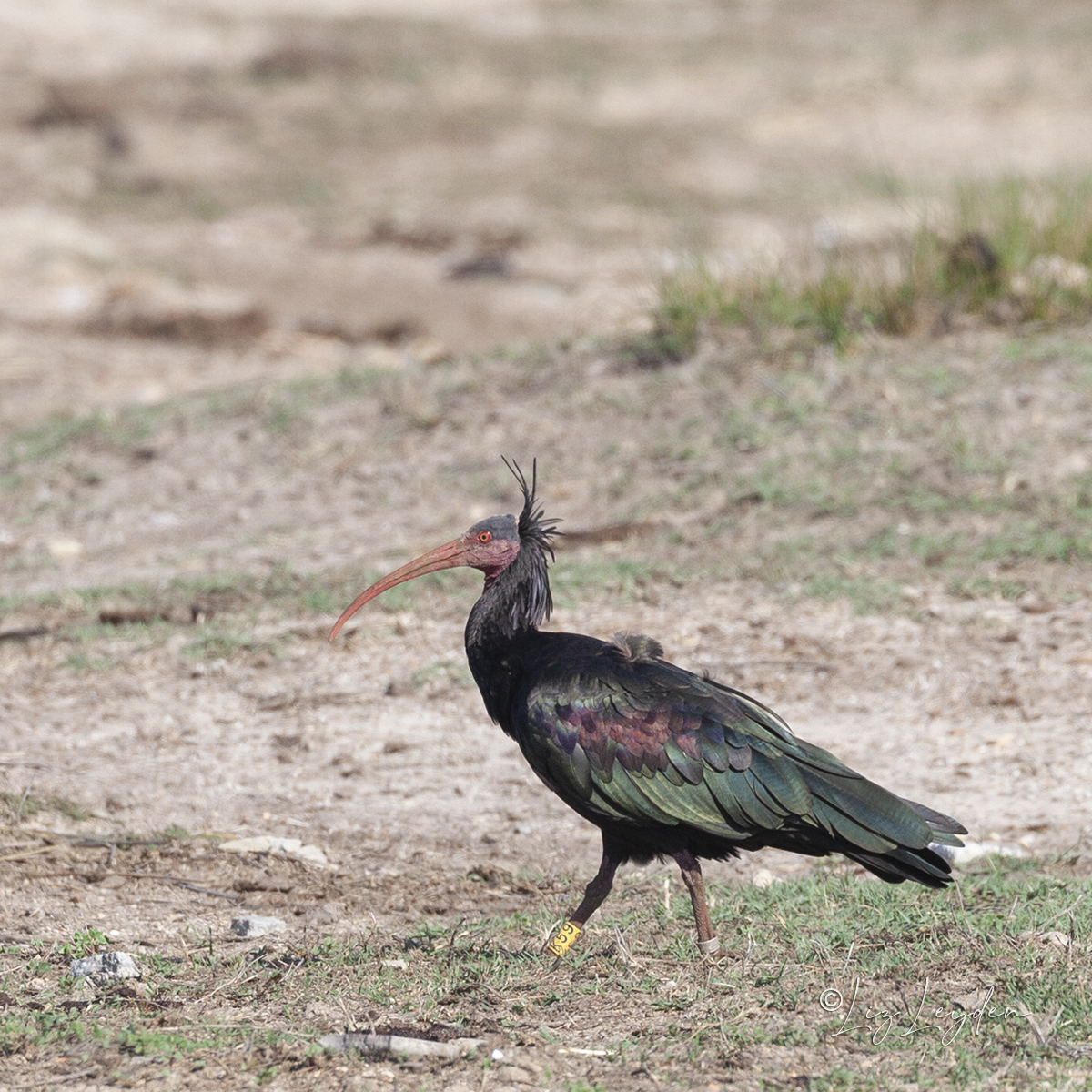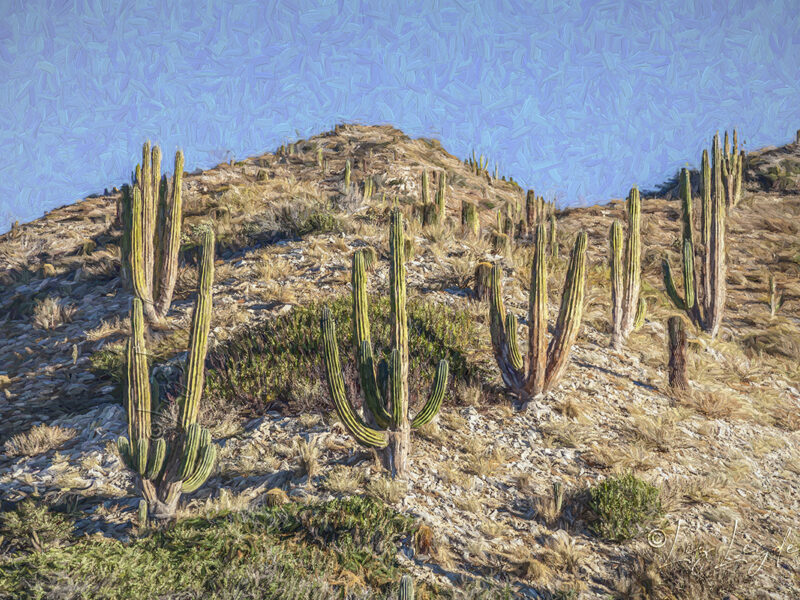A wild Northern Bald Ibis, Geronticus eremita, (Ibis calvo del norte) aka Waldrapp, an endangered species which has been the subject of a successful reintroduction in southern Spain.
Northern Bald Ibis used to be widespread across Europe, but had dwindled down to really tiny numbers, mostly in Morocco. The causes of their catastrophic decline were a perfect storm of:
- agricultural intensification,
- extensive use of DDT in the 1970s (which caused many species of birds to lay eggs with thinner shells, which didn’t support the chicks until viability)
- persecution – in several cultures they have been traditionally regarded as evil spirits or witches and shot.
- Loss of nesting sites: they need to have cliffs to nest on which are near to the pastures where they feed.
Nowadays there are about 700 birds between two breeding sites in the birds’ core area in Morocco, c200 semi-free migratory birds in Turkey.
Phase one of the reintroduction into Spain in 2004 was carried out on military land, and by 2014, most of the available cliff sites for nesting were occupied.

Northern Bald Ibises have historically been associated with humans. The photo above was taken at the entrance to the Marismas de Barbate, where there were two adult birds. A week later, we found eight adults and juveniles, feeding in a cow field, alonside a larger flock of feral pigeons.
See more details about the reintroduction story from Niki Williamson, who co-led my trip to Andalucía in this video.
Both photos are copyright © Liz Leyden, all rights reserved.
The top image is available to license as a stock photo from my portfolio at iStock.


